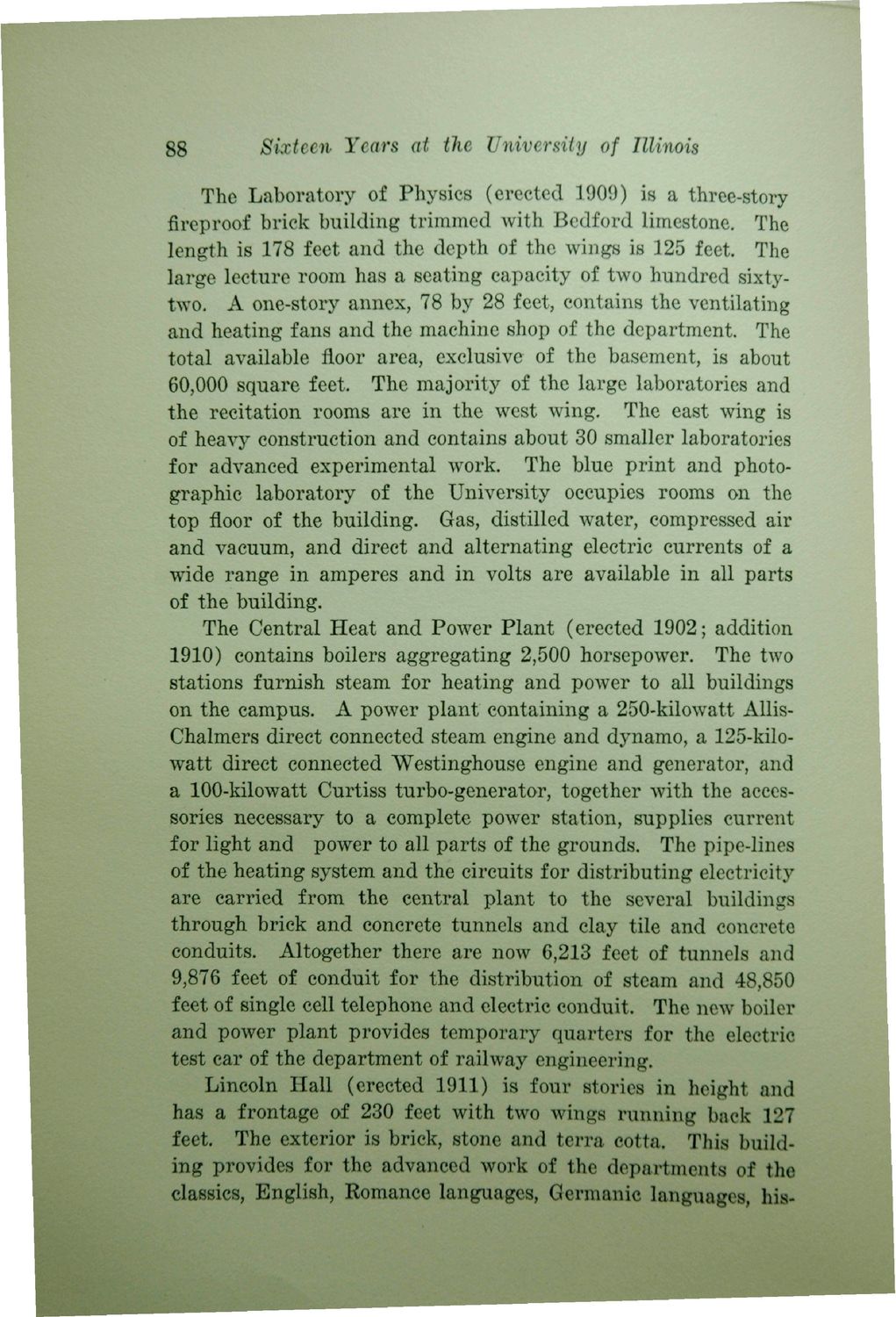| |
| |
Caption: Book - 16 Years (Edmund James)
This is a reduced-resolution page image for fast online browsing.

EXTRACTED TEXT FROM PAGE:
88 Sixteen Years at the University of Illinois The Laboratory of Physics (erected 1909) is a three-story fireproof brick building trimmed with Bedford limestone. The length is 178 feet and the depth of the wings is 125 feet The large lecture room has a seating capacity of two hundred sixtytwo. A one-story annex, 78 by 28 feet, contains the ventilating and heating fans and the machine shop of the department. The total available floor area, exclusive of the basement, is about 60,000 square feet. The majority of the large laboratories and the recitation rooms are in the west wing. The east wing is of heavy construction and contains about 30 smaller laboratories for advanced experimental work. The blue print and photographic laboratory of the University occupies rooms on the top floor of the building. Gas, distilled water, compressed air and vacuum, and direct and alternating electric currents of a wide range in amperes and in volts are available in all parts of the building. The Central Heat and Power Plant (erected 1902; addition 1910) contains boilers aggregating 2,500 horsepower. The two stations furnish steam for heating and power to all buildings on the campus. A power plant containing a 250-kilowatt AllisChalmers direct connected steam engine and dynamo, a 125-kilowatt direct connected Westinghouse engine and generator, and a 100-kilowatt Curtiss turbo-generator, together with the accessories necessary to a complete power station, supplies current for light and power to all parts of the grounds. The pipe-lines of the heating system and the circuits for distributing electricity are carried from the central plant to the several buildings through brick and concrete tunnels and clay tile and concrete conduits. Altogether there are now 6,213 feet of tunnels and 9,876 feet of conduit for the distribution of steam and 48,850 feet of single cell telephone and electric conduit. The new boiler and power plant provides temporary quarters for the electric test car of the department of railway engineering. Lincoln Hall (erected 1911) is four stories in height and has a frontage of 230 feet with two wings running back 127 feet. The exterior is brick, stone and terra cotta. This building provides for the advanced work of the departments of the classics, English, Romance languages, Germanic languages, his-
| |